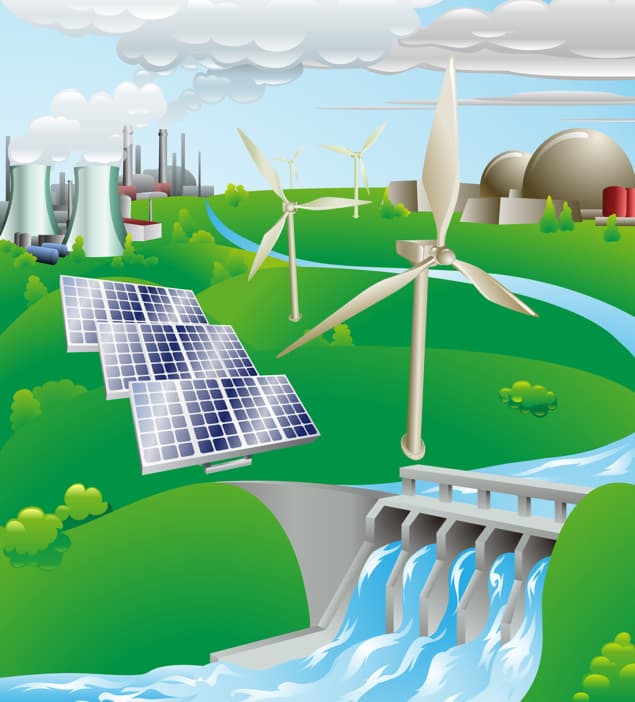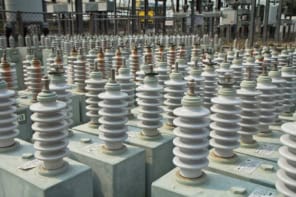In line with his electoral promises, US president Donald Trump has tried to revamp much of the US energy system. So what’s the outlook, asks Dave Elliott

In line with his electoral promises, US president Donald Trump has tried to revamp much of the US energy system, backing coal against renewables, cutting support for climate change research and supporting nuclear power. His most visible action internationally was to indicate his intention to pull the US out of the Paris COP21 climate agreement, but nationally his policies have been just as divisive, with Obama’s Clean Power Plan being attacked and climate policies reversed, along with the linked “social cost of carbon” methodology. That was widely attacked as environmentally irresponsible.
Trump’s main national priority seemed to be to cut federal spending on energy projects he didn’t approve of. However, he only initially identified £100m in possible cuts from the planned 2018 climate and energy allocations. Apparently Obama had managed to stash much of the climate/energy funding in hard-to-cut programme areas. But Trump persevered and came up with more substantial cut proposals. They included a 69% cut for the Department of Energy’s Office of Energy Efficiency and Renewable Energy, and a 31% cut for the Environmental Protection Agency (EPA), filleting the energy programme. Overall, around $1.4bn of clean energy spending was set to be cut. And in all, reportedly, around £3.6bn from energy and climate spending. However, most of the proposed budget cuts were in the event successfully resisted. Indeed, some were reversed. But Trump is now back seeking even larger (72%) DoE budget cuts for 2019, with US energy secretary Rick Perry backing the plan. Some of that now seems to be going ahead. The US House Appropriations Committee has just approved a $243m funding cut for the 2019 energy efficiency and renewable energy programme, but backed a $58m rise in R&D funding for fossil fuels.
Internationally, Trump announced that “the United States will withdraw from the Paris climate accord”, but he added that it will “begin negotiations to re-enter either the Paris accord or a really entirely new transaction on terms that are fair to the United States”. The rest of the world was horrified, and it was made clear that renegotiations were not on. But the exit will take three years to enact. Meantime, the rest of the world seems likely to just get on with it, with China and the EU in the lead.
However, the US will still, it seems, stay in the game globally. In June last year Perry said “The United States will continue to be actively engaged in the development of global energy and the world leader in the development of next generation technology…including nuclear, fossil, LNG and renewables.” He also looked to “technological advances such as carbon capture (CCS) that can leverage the abundant resources we have available in an environmentally responsible way”. He continued, “The United States will continue to be a leader in energy technology, development, and delivery. We will serve as an example to the rest of the world on how to achieve economic, energy, and environmental goals simultaneously.”
Evidently the US wants to exploit its large coal and gas reserves to the full, but how much CCS will be taken on board is unclear – the US flagship project has been cut back.
So carbon emissions could well rise significantly, reversing the current trend: between 2007 and 2015 US CO2 emissions fell by 12%, with a 20% decrease in electricity sector emissions, 50% of that due to gas replacing coal and 40% to renewables replacing coal.
However, Trump’s Paris exit delighted the US far right. You can see why in cash terms. For example, the exit means that the US can stop donating money to the linked Green Fund – so far the US has released $1bn of the $3bn it promised. Not so good for poor countries reliant on aid to try to deal with climate change. Or for the planet, with the US no longer operating within the emission reduction targets set by the Paris accord.
All very worrying. And Trump’s policies are certainly impacting on the market. Some solar companies are failing, though this may be part of a wider boom–bust cycle. But certainly solar PV took a big hit from Trump’s new solar cell import tariff, initially set at 30%, aimed at China, though it may “only” lead to a 11% cutback in US sales and resultant staff lay-offs. Certainly, it was widely seen as an unfortunate setback.
All this is set against a backdrop in which renewable energy costs are falling dramatically around the world, and in the US. So renewables are still likely to move ahead, especially since many US companies, states and cities plan to carry on with their green energy plans. The Federal Production Tax Credit, which has supported wind over the years, may be cut back, but the state level Renewable Portfolio Standard (RPS) system will continue, although perhaps at a lower level.
With costs falling, subsidies may in any case be less necessary. PV may be unstoppable, especially with the advent of cheaper batteries. Tesla’s Elon Musk has even claimed that the whole US could be run on 100 square miles of PV backed up by his Powerwall batteries. There’s also the floating PV idea.
It may have been something of a wild card, but there were reports that Trump had picked up on PV and had proposed a solar wall along the US-Mexico border: a maybe 1000-mile long, 40–50 foot high PV-clad construction. That was seen as pretty silly. It would be a long way from most cities and, being isolated, might be prone to attacks, theft and vandalism. The economics were also seen as marginal. Trump reportedly claimed it was his idea: “We’re thinking about building the wall as a solar wall. Pretty good imagination, right? It’s my ideas.” However, the idea had, it seems, first surfaced a year earlier in an oppositional anti–Trump context.
The real wild card was Trump’s support for nuclear power. This has been in steady decline in the US, with old plants closing early as gas and renewables undercut their economics, and only one new project now going ahead – Vogtle in Georgia. Even the generally pro-nuclear US Department of Energy’s EIA suggested that the nuclear contribution would fall from 20% now to about 11% by 2050. That actually seems optimistic. Certainly the decision to halt construction of the 40%-finished VC Summer AP1000 plant, after $9bn had been spent on it, was a blow to US nuclear expansion hopes.
Trump, however, insisted it could be revived: “We will begin to revive and expand our nuclear energy sector, which I’m so happy about, which produces clean, renewable and emissions-free energy. A complete review of US nuclear energy policy will help us find new ways to revitalize this crucial energy resource.”
To that end, Rick Perry announced $30m to support development of advanced nuclear energy technology with Small Modular Reactors being one feature, though there have been problems with some SMR proposals. More significantly, he sought to initiate a revamp of energy market rules to better value energy sources that can supply continuous power – essentially, coal, gas and nuclear. That was seen as potentially counterproductive and economically unwise. In the event, this move was rebuffed.
As can be seen, battles continue over each of Trump’s policies, including the EPA’s move to scrap the Clean Power Plan regulations on emissions, with some states and cities ignoring the new policies and joining the fight back.
So what’s the bottom line? Despite everything, renewable are still progressing, PV and wind now surpassing 10%. Wind is at over 80 GW, and offshore wind is at last picking up, with plans for near 8 GW. PV too is booming – 33 GW so far. Overall, wind and PV are claimed to have avoided $88bn in US health costs by reducing pollution.
Last year, the US invested $56.9bn on clean energy according to BNEF – up 1% on 2016, so it is still moving ahead. The US moved up to number two globally in Ernst and Young’s annual renewables investment attractiveness index. The 2018 US Federal Energy Regulatory Commission’s Energy Infrastructure Update suggests that US renewables could hit 257 GW by 2021, more than doubling their current 123 GW (excluding hydro, currently at 100 GW), with proposed net additions by utility-scale wind and solar maybe totalling 133 GW by 2021. Meanwhile, FERC suggests that there may be a net decline of 18.7 GW for coal, 6.6% of current capacity, and a nuclear drop of 2.3 GW, 2.2% of current capacity. Longer term, the latest official EIA projections have PV supplying 14% of US electricity by 2050, with wind and solar “accounting for 64% of the total electric generation growth in the reference case through 2050”.
Even so, the old tech will not all disappear quickly. Coal use may be on the way out globally, and coal mining is threated in the US, with big impacts locally. But it still continues and, with shale gas use booming, US coal exports have soared by 60%. New nuclear may be mostly stalled, but subsidies for old US nuclear plants are being negotiated, challenging renewables.
So the future remains uncertain, with brave efforts to map out a different path, like Jacobson’s “100% renewables by 2050” study, being dissed by some critics. Just at the point when other studies were coming to similar conclusions – the US, like most other countries, could get to 100%, or at least 80%.
In my next post I will look at China, where things are somewhat different.



